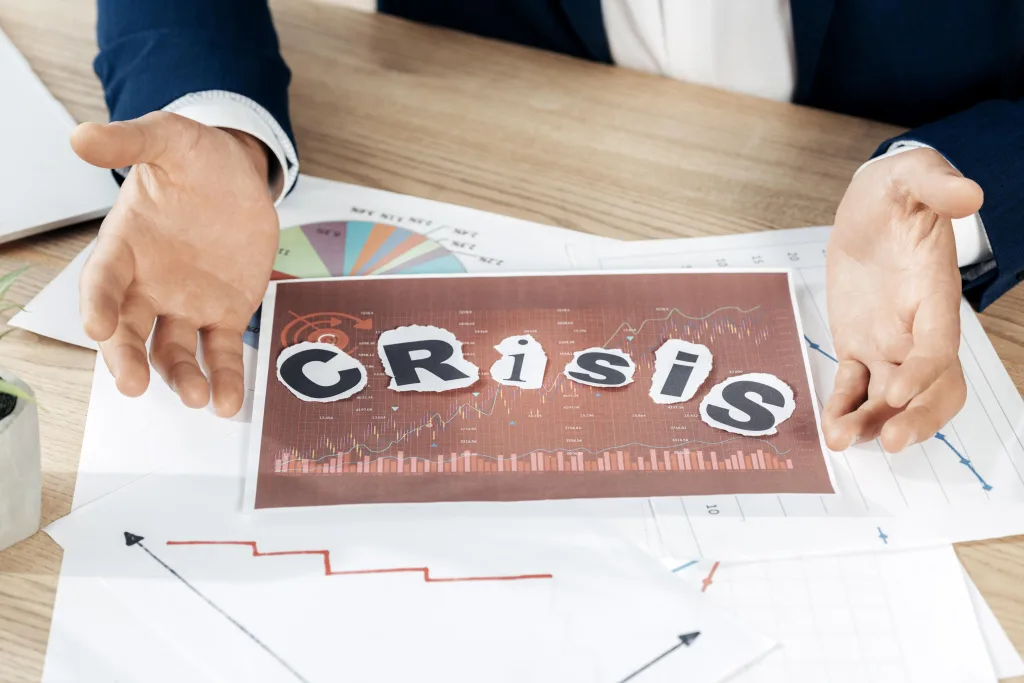Understanding Crisis Management: What It Is and Why It’s Crucial for Businesses
Crisis management is a crucial aspect of business operations that involves preparing for and responding to unexpected events that may threaten the reputation, operations, or financial stability of a company. It is essential for businesses to have a clear understanding of crisis management in order to effectively navigate through challenging situations.
In Crisis Management, how do you develop skills to handle crises and emergencies effectively, ensuring the resilience of the organization during challenging times? Please read on…
Disclosure: If you click on my affiliate/advertiser’s links, I am going to receive a tiny commission. AND… Most of the time, you will receive an offer of some kind. It’ s a Win/Win!
There are various types of business crises that can occur, such as natural disasters, product recalls, data breaches, or public relations issues. Having a well-defined crisis management plan in place can help businesses mitigate the impact of these crises and protect their brand reputation.
The importance of crisis management cannot be overstated. A proactive approach to crisis planning allows businesses to respond swiftly and effectively when faced with unexpected challenges. By implementing crisis response strategies and protocols, companies can minimise disruption, maintain stakeholder trust, and potentially turn a crisis into an opportunity for growth.

Image by freepik
Yes, understanding crisis management is vital for businesses to safeguard their interests and ensure long-term success. By investing in robust crisis planning and response mechanisms, organisations can demonstrate resilience in the face of adversity and emerge stronger from challenging situations.
Key Components of an Effective Crisis Management Plan
An effective crisis management plan consists of several key components to ensure a swift and coordinated response during challenging times.
Firstly, a well-defined crisis communication plan is essential to keep all stakeholders informed and updated throughout the crisis. This includes clear messaging strategies and channels for dissemination.
Secondly, outlining specific crisis team roles and responsibilities is crucial for assigning tasks and ensuring accountability during the crisis. Each team member should understand their role in the response process.
Thirdly, establishing detailed crisis response procedures helps streamline decision-making processes and actions during an emergency situation. This includes protocols for escalation, communication flow, and resource allocation.
Furthermore, proactive crisis preparedness measures such as regular training exercises and simulations can help teams anticipate potential risks and better prepare for unforeseen events.
A robust crisis management strategy should also include continuous risk assessment to identify potential threats, vulnerabilities, and opportunities for improvement in the response plan.
By incorporating these key components into a comprehensive crisis management plan, organisations can enhance their resilience and ability to effectively navigate through challenging situations.
Mastering the Art of Project Management: Your Path to ExcellenceProactive vs. Reactive Approaches in Crisis Management: Which is More Effective?
When it comes to crisis management, understanding the difference between proactive and reactive approaches is crucial. Proactive crisis management involves implementing strategies to prevent crises from occurring in the first place, while reactive crisis response focuses on addressing crises as they arise.
Proactive crisis management includes developing and implementing crisis prevention strategies, conducting risk assessments, and establishing clear communication channels. On the other hand, reactive crisis response involves managing a crisis after it has already occurred, often leading to a more chaotic and less controlled situation.
The effectiveness of proactive versus reactive approaches in crisis management depends on various factors such as the nature of the crisis, industry regulations, and organisational culture. Finding the right balance between proactive measures to prevent crises and reactive responses to manage them effectively is key to successful crisis management.
Case Studies: Examining Successful Crisis Management Strategies in Real-World Scenarios
In the realm of crisis management, real-world case studies offer invaluable insights into successful strategies employed by brands to navigate challenging situations and safeguard their reputation. Let’s look at some crises in the past and the affected companies handled them. What are the lessons?
Here are some real-world examples of corporate crisis management strategies and successful crisis communication cases:
### 1. Johnson & Johnson’s Tylenol Crisis (1982):
– **Crisis:** Seven people died after consuming Tylenol capsules that had been tampered with and laced with cyanide.
– **Response:** Johnson & Johnson recalled 31 million bottles of Tylenol, costing them around $100 million. They also introduced tamper-proof packaging, collaborated with law enforcement, and provided full transparency in their communication.
– **Outcome:** Despite the crisis, Johnson & Johnson’s swift response and commitment to consumer safety helped them regain public trust. Tylenol’s market share recovered, and the company’s handling of the crisis is often cited as a textbook example of effective crisis management.
### 2. Toyota’s Accelerator Pedal Recall (2009-2010):
– **Crisis:** Toyota faced a massive recall of millions of vehicles worldwide due to accelerator pedal defects linked to unintended acceleration incidents, leading to accidents and fatalities.
– **Response:** Toyota issued recalls, halted production, and initiated investigations into the causes of the defects. They also communicated directly with customers, established a dedicated website for updates, and implemented corrective measures.
– **Outcome:** Although the crisis initially damaged Toyota’s reputation and sales, their proactive approach to addressing the issue and implementing safety measures helped restore consumer confidence over time.

### 3. United Airlines’ Passenger Incident (2017):
– **Crisis:** United Airlines faced public outrage and widespread condemnation after a video surfaced showing security personnel forcibly removing a passenger from an overbooked flight, resulting in injuries to the passenger.
– **Response:** United Airlines CEO Oscar Munoz issued multiple public apologies, promised a thorough investigation, and announced policy changes to prevent similar incidents. The airline also reached a settlement with the passenger.
– **Outcome:** Despite the initial backlash and negative media coverage, United Airlines’ swift response, willingness to take responsibility, and commitment to addressing the issue contributed to reputation recovery efforts.
### 4. Airbnb’s Trust and Safety Crisis (Various Incidents):
– **Crisis:** Airbnb faced several high-profile incidents involving hosts and guests, including cases of property damage, theft, and safety concerns, tarnishing the company’s reputation for trust and safety.
– **Response:** Airbnb implemented enhanced safety measures, such as verified ID requirements, host protection insurance, and 24/7 customer support. They also launched initiatives to address discrimination and promote inclusivity.
– **Outcome:** Airbnb’s proactive measures and transparent communication helped rebuild trust among users and stakeholders. The company’s commitment to safety and accountability contributed to its ongoing success and growth.

### 5. Starbucks’ Racial Bias Incident (2018):
– **Crisis:** Starbucks faced public backlash and calls for boycotts after an incident at one of its stores where two African American men were arrested for trespassing while waiting for a friend.
– **Response:** Starbucks CEO Kevin Johnson issued a public apology, personally met with the individuals involved, and announced plans to close stores for racial bias training. The company also launched initiatives to promote diversity and inclusion.
– **Outcome:** Starbucks’ swift and decisive response, coupled with tangible actions to address racial bias, was well-received by the public and helped mitigate the impact of the crisis on its brand reputation.
### 6. BP’s Deepwater Horizon Oil Spill (2010):
– **Crisis:** BP faced one of the largest environmental disasters in history when the Deepwater Horizon oil rig exploded, causing a massive oil spill in the Gulf of Mexico.
– **Response:** BP launched a massive cleanup effort, established a $20 billion compensation fund for affected parties, and collaborated with government agencies and experts to contain the spill and mitigate environmental damage.
– **Outcome:** Despite extensive damage to BP’s reputation and financial losses, their long-term commitment to cleanup and compensation efforts, as well as improvements in safety protocols, helped restore some public trust over time.
These examples highlight the importance of effective crisis management strategies, including prompt response, transparency, accountability, and proactive communication, in navigating challenging situations and mitigating reputational damage. Successful crisis communication involves not only addressing immediate issues but also implementing long-term measures to rebuild trust and resilience.
By examining corporate crisis examples and brand reputation recovery cases, we can glean valuable lessons from past experiences. These crisis communication success stories shed light on effective crisis management strategies where brands have handled crises well, showcasing the power of strategic communication in times of adversity.

The Role of Leadership in Navigating Through a Crisis: Tips for Executives and Managers
In times of crisis, effective leadership plays a crucial role in guiding organisations through uncertainty and challenges. Leaders are tasked with making critical decisions under pressure, maintaining stakeholder trust, and demonstrating strong crisis management skills.
Key qualities of effective crisis leadership include clear communication, strategic decision-making, empathy towards employees and stakeholders, adaptability to changing circumstances, and the ability to inspire confidence in the team. (Read more about what makes for an effective leader here.)
Executives and managers can navigate through a crisis successfully by prioritising transparency in communication, remaining calm under pressure, being proactive in addressing issues, fostering collaboration within the team, and upholding ethical standards throughout the decision-making process. By demonstrating these qualities and actions, leaders can steer their organisations towards resilience and recovery during challenging times.

How do you develop skills to handle crises and emergencies effectively, ensuring the resilience of the organization during challenging times?
Developing skills to handle crises and emergencies effectively is crucial for ensuring the resilience of an organization during challenging times. Here are key steps to enhance crisis management skills and foster organizational resilience:
1. Understand the Nature of Crises:
- Educate Yourself:
- Stay informed about different types of crises that may impact your organization, including natural disasters, cybersecurity threats, financial crises, and public relations challenges.
- Conduct Risk Assessments:
- Regularly assess potential risks and vulnerabilities to identify areas where crises may occur. This involves evaluating both internal and external factors.
2. Develop Crisis Management Plans:
- Establish a Crisis Management Team:
- Form a dedicated crisis management team with clearly defined roles and responsibilities. Ensure representation from various departments.
- Create Crisis Management Protocols:
- Develop detailed crisis management plans outlining specific steps to take in various crisis scenarios. Include communication plans, resource allocation, and response strategies.
- Conduct Regular Drills and Simulations:
- Practice crisis scenarios through drills and simulations to ensure that the crisis management team is well-prepared and can respond effectively under pressure.

3. Enhance Communication Skills:
- Establish Communication Protocols:
- Define clear communication channels and protocols for disseminating information internally and externally during a crisis.
- Train Spokespersons:
- Identify and train designated spokespersons who can effectively communicate with the media, employees, stakeholders, and the public.
- Utilize Technology:
- Leverage technology for real-time communication, including social media, emergency notification systems, and other communication platforms.
4. Crisis Leadership and Decision-Making:
- Develop Crisis Leadership Skills:
- Train leaders to exhibit calm and decisive leadership during crises. Emphasize the importance of quick, yet thoughtful decision-making.
- Establish Decision-Making Protocols:
- Define decision-making protocols, ensuring that decisions are made efficiently, based on available information, and aligned with organizational goals.
- Stress Management Training:
- Provide stress management training to leaders to help them cope with the pressures associated with crisis management.
5. Build Resilient Teams:
- Promote Team Cohesion:
- Foster a culture of teamwork and cohesion within the organization. Emphasize the importance of supporting one another during challenging times.
- Cross-Train Employees:
- Cross-train employees to ensure that multiple individuals are familiar with critical roles and responsibilities, reducing dependency on specific individuals.
6. Continuous Learning and Improvement:
- Conduct Post-Crisis Reviews:
- After a crisis has been managed, conduct thorough reviews to identify lessons learned and areas for improvement in crisis management processes.
- Update Crisis Management Plans:
- Regularly update and refine crisis management plans based on the insights gained from post-crisis reviews and changing organizational dynamics.
7. Engage External Resources:
- Establish Partnerships:
- Form partnerships with external entities, including emergency services, government agencies, and industry peers, to enhance collective crisis response capabilities.
- Access External Expertise:
- Have access to external experts, consultants, or crisis management professionals who can provide guidance and support during complex crises.
8. Legal and Regulatory Compliance:
- Stay Informed about Regulations:
- Stay informed about legal and regulatory requirements related to crisis management in your industry and geographic location.
- Compliance Training:
- Train employees on compliance protocols and legal obligations during crises, ensuring that the organization operates within legal boundaries.
9. Crisis Communication Training:
- Media Training:
- Provide media training to spokespersons to ensure they can effectively convey information to the public and media without causing unnecessary panic.
- Addressing Public Perception:
- Train leaders to understand the importance of managing public perception and reputation during and after a crisis.
10. Crisis Resource Management:
- Resource Allocation Strategies:
- Develop strategies for efficient resource allocation, ensuring that critical resources are directed to the most urgent and impactful areas during a crisis.
- Supply Chain Resilience:
- Strengthen supply chain resilience to mitigate disruptions and ensure the availability of essential goods and services.
11. Crisis Communication and Public Relations:
- Build Stakeholder Trust:
- Develop strategies to build and maintain trust with stakeholders, emphasizing transparency, honesty, and accountability in communications.
- Social Media Monitoring:
- Monitor social media channels to gauge public sentiment, address misinformation, and engage with the audience effectively.
12. Emotional Intelligence:
- Leadership EQ Training:
- Train leaders in emotional intelligence to help them navigate the emotional aspects of crisis management, both for themselves and their teams.
- Employee Well-being Programs:
- Implement programs that support the emotional well-being of employees during and after a crisis.
Free accounting software for small businesses. Click HERE
13. Global Perspective:
- Global Preparedness:
- If the organization operates globally, consider regional and cultural nuances in crisis response plans to ensure effectiveness across diverse contexts.
- International Crisis Management Protocols:
- Establish protocols for managing crises that have international implications, considering geopolitical factors and cross-border implications.
14. Ethical Considerations:
- Ethical Decision-Making Training:
- Provide training on ethical decision-making during crises, emphasizing the importance of maintaining integrity and ethical standards.
- Crisis Ethics Protocols:
- Establish clear protocols for ethical conduct and decision-making in high-pressure situations.
15. Preparedness for Specific Scenarios:
- Scenario-Specific Training:
- Tailor crisis management training to specific scenarios relevant to the industry, such as cybersecurity threats, natural disasters, pandemics, etc.
- Specialized Expertise:
- Ensure that the crisis management team includes individuals with specialized expertise relevant to potential crisis scenarios.
16. Post-Crisis Recovery Planning:
- Recovery Strategies:
- Develop comprehensive recovery strategies to facilitate a smooth transition back to normal operations after a crisis.
- Employee Support Programs:
- Implement programs to support the well-being of employees during the recovery phase, including counselling services and wellness initiatives.
By systematically addressing these areas and regularly updating crisis management plans, organizations can enhance their ability to handle crises effectively and build resilience. The development of skills and capabilities in crisis management contributes to the overall sustainability and long-term success of the organization in the face of unexpected challenges.
Stop guessing, start growing: Unlock actionable Shopify insights with Sirge and get 20% Off.
Conclusion: Building Resilience Through Effective Crisis Management Practices for Long-Term Success
In conclusion, it is imperative for organisations to take proactive steps in strengthening their resilience amidst uncertainties and challenges. By implementing comprehensive crisis management practices, businesses can not only navigate through crises effectively but also set a strong foundation for long-term success.
Building resilience is key for organisations to navigate through challenging times successfully. By implementing strategic planning, effective communication strategies, and agile decision-making processes, businesses can better withstand turbulence. Learning from past experiences, adapting swiftly to changing circumstances, and continually enhancing crisis management capabilities are crucial elements for thriving in a very turbulent world.
- Turn AI Anxiety into Competitive Advantage: How to Future-Proof Your Workforce for the AI Revolution
- Unlock Profit: Calculate Customer Lifetime Value & Maximize Growth
- Creating a Customer Persona: A Step-by-Step Guide On How To Do It
- Unleashing the Power of Digital Signage: The Best Software to Transform Your Business
- How Businesses Can Use Freelance Platforms & Expert Networks to Scale Smarter







